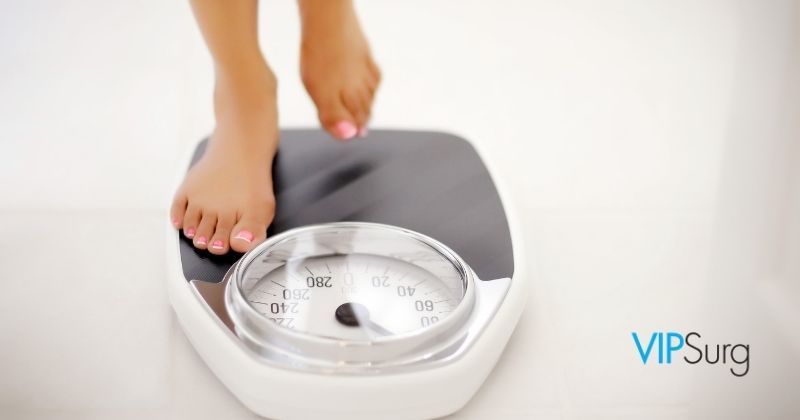
If you ever search online for photos of weight loss, dieting, or body image, you might be quite shocked (or not) to see a flood of images of the scale — or worse, the scale chained to a person’s ankle. This imagery, as cartoonish and “silly” as some may think, is very telling when we take into account that the scale has become our proverbial anchor in our quest for better health and weight loss. When we think of marking our progress along our weight loss journey, the number on the scale reigns supreme. In fairness, our doctors check our weight, our BMI is calculated, and even those clothing size charts require us to boil our bodies down to numbers.
There is no argument against weight being significant. The number is a great start- and endpoint for most healthy weight loss regimens. When taking into account your height, activity level, and body composition, weight is a good marker of general health. But along the way, the fluctuations on the scale should be used less to note progress, and more to give you a general idea of the direction you’re moving.
You’ve heard it before, but you don’t really care why the needle on the scale moved up. No, it doesn’t make you feel any better to know that a night of eating high-sodium takeout makes you weigh more in the morning. Water retention from processed and restaurant foods, in addition to menstrual cycles, can send the scale into a frenzy only to return to “normal“ post-cycle. Certainly, an indulgent meal (or day of holiday eating!) can move the numbers up, but they will fall right back into place when you pick up where you left off. This is why our “old friend” the scale is sometimes unreliable.
Enter the Waistband
Our waistband is a better companion on our weight-loss journey. Non-stretchy jeans, pants with zippers, these can all be great indicators of your progress. Keep one item of clothing and periodically use it to gauge how it fits when you put it on. And the best part, as you finally slip into that once-impossible fit, you can go shopping for the next stylish barometer.
Say Cheese!
Another way to track weight loss progress without the scale is by putting your selfie skills to work. Either privately or publicly through your social media platform, take a “before photo” as you begin your journey and document milestones in pictures. You will clearly see the changes in the way you look. We see ourselves every day, so a reflection in the mirror can either encourage or discourage us based on our mood on a particular day.
Think about when you haven’t seen a particular celebrity in quite some time. Your eyes know whether their body has changed, regardless of what their scale may say. The same applies to you. You can’t quite understand or appreciate the beginning of your journey unless you get a visual reminder to compare with how far you’ve come.
Moreover, photos can be very helpful as the numbers on the scale often don’t reflect the change in contour of your body, especially if you’re incorporating strength training into your routine. The shape of your body can change with muscle tone, but the number may not budge, or in fact, may increase. We all remember the mantra: muscle weighs more than fat. Before-and-after-and-during photos are proof.
If you want to take it one step further, make your journey public through social media and have your followers/friends keep you accountable and cheer your progress along the way. You might be surprised to know that you’re inspiring others while inspiring yourself to keep moving forward.
New Habits, New Health
You may also wish to judge your weight and health transformation success through changes of habits and even activity level. Don’t be surprised, if you keep track, to see major milestones in the gym, on your pedometer, or even in your grocery cart. Small changes like cutting out processed foods, artificial sweeteners, and swapping sugary beverages with water are all progress markers. We just aren’t conditioned to see it that way. Are you shopping on the perimeter of the supermarket? Have you avoided the inner aisles (mostly) for a couple of weeks? Success! These are small changes that will ultimately show up in the way you feel and look.
It’s All in The Blood
Lastly, and perhaps most importantly, are another set of numbers – those you’ll find out at periodic follow-up appointments. While the numbers on the scale may fluctuate, bloodwork and assessments of important markers such as blood sugar levels, blood pressure, cholesterol and even quality of sleep, are all indicators that you have made tremendous progress.
Yes, we are conditioned to want to see the number on the scale go down, and with time, adopting these great behaviors can make that number plummet if you’re consistent, positive, and understand that positive changes on the scale take time.









